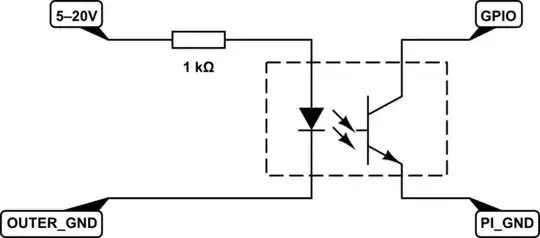I'm rather new to logic circuits and I'm trying to figure out which component I need to complete my project.
I'm attempting to make a backup/reverse camera. When I shift into reverse, 12V is sent to the reverse lights. I'd like the Pi to display it's camera feed onscreen when that reverse light is turned on.
I understand that automotive circuits are very noisy, but tests so far show that in my car, the voltage sent on this particular circuit is very clean, never going +/- more than 0.15 volts.
I need my Pi to be able to detect when that circuit is hot, and a Python script I've written will display the camera feed when it detects a 'HIGH' signal, and close it when on 'LOW'. However, I'm aware that the GPIO pins can only handle up to 3.3V, so I can't just hook the Pi up in series.
What components would I need to add so the Pi can detect the closed 12-volt circuit safely, without lowering the voltage to the light? Specific product recommendations aren't necessary.

